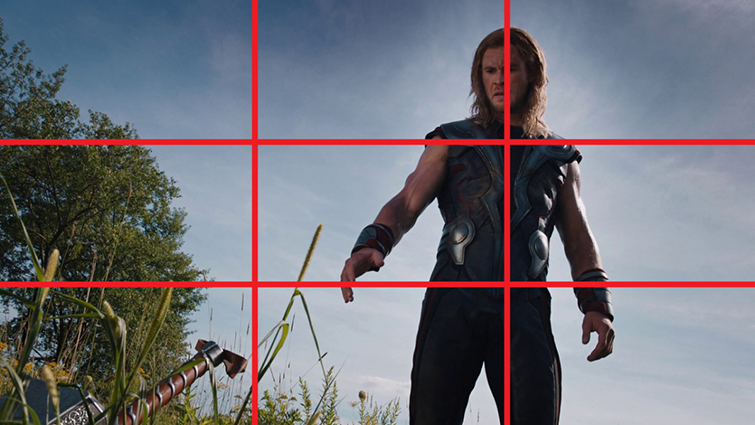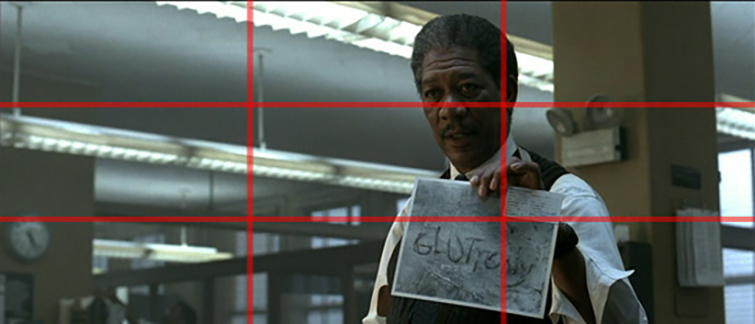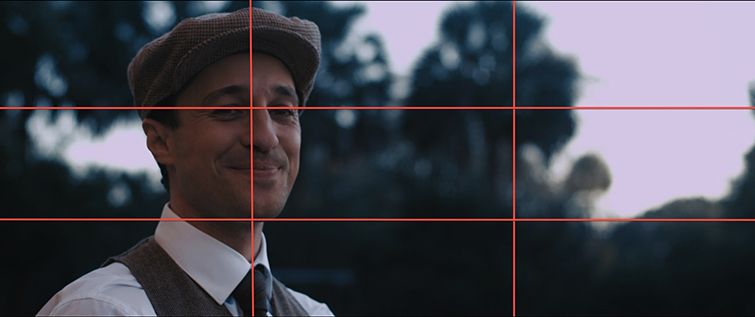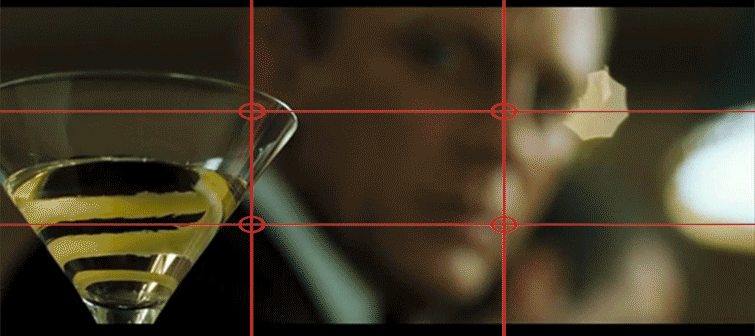
BY ROBBIE JANNEY NOVEMBER 15, 2017
Using the Rule of Thirds can dramatically increase the look of your composition. Here’s a few tips on how to integrate this technique into your next shot.
Cover image via Universal Pictures and Learn Online Video.
When you’re first learning about cameras and shot composition, one of the basic concepts you encounter is the rule of thirds. If you haven’t heard of the rule yet, I like Grace Fussell‘s definition:
Imagine a 3×3 grid on top of any image. You should align the key elements in the image according to this grid — at the ‘power points’ where the lines intersect, or along and within the vertical and horizontal lines. You can also combine these two arrangements for complex images with layers of subjects.
As Fussell explains in this Shutterstock article, the lines on the 3×3 grid are the places where our eyes automatically look for information. When you put the main focus of your image along this grid, the result is more aesthetically pleasing to your viewer.
If you are looking for the fundamentals of the rule of thirds in still images, check out Grace’s article. Here, I’ll focus on how to apply the rule of thirds to moving images.
Placement

In a typical shot, your subject should be somewhere within the grid divides, as you can see above. The subject can be both the character and the object, since they often work together. Each is at opposite sides of the frame, which draws equal attention to both subjects. Objects need room around them to enable the viewer to see them more clearly. If the character is in the middle of the frame, all attention who go to them, and the object would no longer be a critical piece of the frame.

Another rule of thirds tactic is the concept of leading. This is when you place your subject on the opposite side of the frame from the object of his or her attention. This technique is psychological in nature because when your eyes look at incomplete information (such as an actor looking offscreen), they want to fill it to make it complete. In the image above, the subject is presenting something to a subject offscreen. Even though there is nothing in the left side of the shot, our minds automatically deduce that there is someone on the other side of that frame. If the subject had no lead room, the shot would just feel off.
Eye Lines

Using the rule of thirds is a great way to establish eye lines. Check out the shot above. Feels natural, right? Just like the leading concept, since your eyes are automatically searching for information along those lines, you can find his eyes easily and instinctively read his emotions. Humans can gather a lot of information by reading someone’s eyes, so when you place them in a easy-to-find spot in your composition, the viewer connects more naturally with what you are trying to portray.
Rack Focus

Image via Metro-Goldwyn-Mayer and Columbia Pictures.
When you’re trying to pull off a rack focus shot, object placement is critical. Using the rule of thirds is a neat way to find where you should place those objects. In the shot above, both the glass and the actor carry a lot of visual weight when it comes to the information of this shot. The focus from the foreground to the background conveys that the glass has some sort of influence over the actor.
You may say that the two subjects are too close together, but the closeness transmits a sense of urgency and immediacy to the viewer. Their distance is the perfect balance. Any farther would have separated the two, and any closer would block the actor’s face with the glass, ruining the ever-important emotions we’re watching in the actor.
All in all, the rule of thirds may be a basic concept, but the impact it has on your shot composition is astronomical. Next time you are shooting something, turn on the grid feature on your camera and adjust from there. Trust me, you will come out with some awesome cinematic shots.
Links to LIVECAST video and streaming services
